 W
WAblepharus rueppellii, known commonly as Rüppell's snake-eyed skink, is a species of skink found in the Middle East. It was formerly considered a subspecies of Ablepharus kitaibelii, but has since been distinguished. What is currently recognized as this species is possibly two distinct species.
 W
WThe Argentine black and white tegu, also commonly called the Argentine giant tegu, the black and white tegu, the huge tegu, and lagarto overo in Spanish is a species of lizard in the family Teiidae. The species is the largest of the "tegu lizards". It is an omnivorous species which inhabits the tropical rain forests, savannas, and semi-deserts of eastern and central South America.
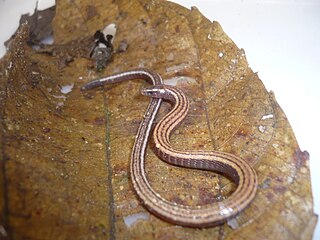 W
WBachia dorbignyi, Dorbigny's bachia, is a species of lizard in the family Gymnophthalmidae. It is found in Peru, Bolivia, and Brazil.
 W
WThe black-headed monitor or mournful monitor is a relatively small species of monitor lizards native to Australia. It is occasionally also called the freckled monitor or the racehorse monitor, a name it shares with the Gould's monitor due to their exceptional speed. It is placed in the subgenus Odatria.
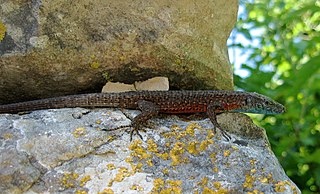 W
WThe blue-throated keeled lizard, or Dalmatian algyroides, is a species of lizard in the family Lacertidae.
 W
WBougainville's skink is a species of skink, a lizard in the family Scincidae. This species is also commonly called the south-eastern slider.
 W
WBrachymeles bonitae, commonly known as Hikida's short-legged skink or the stub-limbed burrowing skink, is a species of skink found in the Philippines. It was first described in 1839 by André Marie Constant Duméril and Gabriel Bibron. It is endemic to the Philippines.
 W
WBungarus lividus, the lesser black krait, is a species of venomous elapid snake found in India, Bangladesh, and Nepal.
 W
WCarlia fusca, the brown four-fingered skink or Indonesian brown skink, is a species of skink in the genus Carlia. It is endemic to Halmahera in Indonesia and Bismarck Archipelago in Papua New Guinea
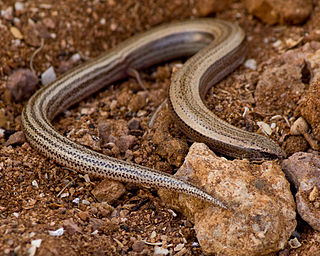 W
WChalcides mauritanicus, or the two-fingered skink, is an African species of skink found in Algeria and Morocco. It occurs in sandy areas and plantations, but cannot exist in severely modified habitats. It also requires good ground cover, but as this is becoming increasingly scarce, the species is declining. The distribution of the species is severely fragmented. Females of the species give birth to live young.
 W
WChioninia coctei, also called the Cape Verde giant skink, Bibron's skink, lagarto, or Cocteau's skink, is a species of lizard, a reptile that was at one time known to inhabit the islets of Branco and Raso in the Cape Verde islands of the Atlantic Ocean, rendered deserts by human-caused habitat destruction. None have been observed since the early 20th century, and the species was officially declared extinct in 2013.
 W
WThe common garden skink or pale-flecked garden sunskink, also known as a penny lizard, is a species of small common skink endemic to Australia.
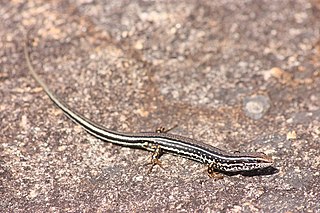 W
WThe common south-west ctenotus is a species of skink found in Western Australia.
 W
WDarwin's ringed worm lizard is a species of reptile in the family Amphisbaenidae. The species is endemic to South America.
 W
WDasia olivacea, the olive dasia or olive tree skink, is a species of skink native to Southeast Asia.
 W
WDicrodon guttulatum, the Peru desert tegu , is a species of teiid lizard found in Ecuador and Peru.
 W
WDumeril's monitor is a species of lizard, endemic to Southeast Asia. It is a member of the family Varanidae.
 W
WThe emerald tree monitor or green tree monitor, is a small to medium-sized arboreal monitor lizard. It is known for its unusual coloration, which consists of shades from green to turquoise, topped with dark, transverse dorsal banding. This coloration helps camouflage it in its arboreal habitat. Its colour also makes the emerald tree monitor highly prized in both the pet trade and zoos alike.
 W
WEulamprus quoyii, commonly known as the eastern water skink, eastern water-skink, or golden water skink, is a species of diurnal skink, which is endemic to Australia, primarily in the southeast.
 W
WThe European leaf-toed gecko is a species of lizard in the family Sphaerodactylidae. It is found in coastal regions of France, Italy and Tunisia and on Mediterranean islands. Its natural habitats are rocky areas and rocky shores.
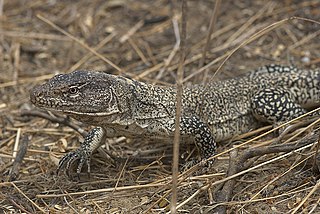 W
WThe false monitor or tegú varano is a species of lizard in the family Teiidae. It is found in Peru and Ecuador.
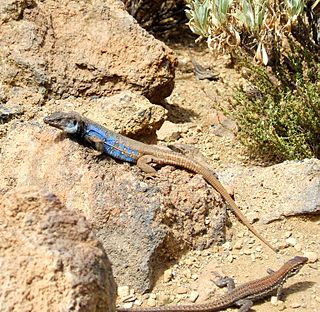 W
WGallotia galloti is a species of lacertid in the genus Gallotia. The species is found on the Canary Islands of Tenerife and La Palma.
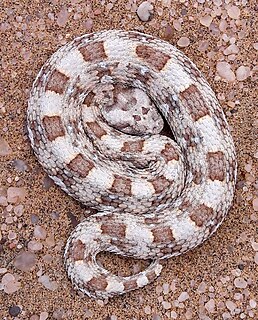 W
WThe horned adder is a venomous viper species found in the arid region of southwest Africa, easily distinguished by the presence of a single, large horn-like scale over each eye. No subspecies are currently recognized.
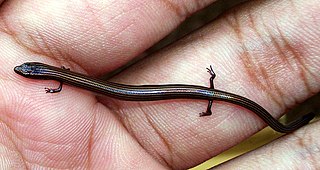 W
WLygosoma lineata, the lined writhing skink or lined supple skink, is a species of writhing skink. It is known from India, Bangladesh and Myanmar. This skink grows to about 6 cm in length. The body colouration is golden and each scale has a black dot forming longitudinal stripes on the body. It is known to occur from Gujarat to north of Karnataka. In Mumbai this skink has been observed in the Sanjay Gandhi National Park and Aarey milk colony. It is often found under rocks, loose soil associated with termite mounds and ant hills. It is crepuscular. A captive individual accepted termites, mosquito, house flies, ant eggs for about 45 days and was released.
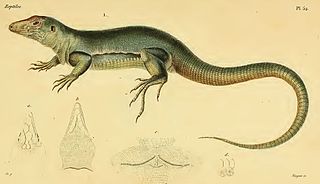 W
WThe Martinique giant ameiva was a species of lizard in the family Teiidae. It is believed to have been endemic to Martinique, though at least one scholar disputes this, instead placing it on Les Iles de la Petite Terre within the Guadeloupean archipelago. It is known only from museum specimens collected by early European explorers. Its extinction may have been caused by a hurricane, or through the introduction of predatory species to the island.
 W
WThe Moroccan rock lizard is a species of lizard in the family Lacertidae. Its classification is uncertain and it has been placed in the genera Teira, Podarcis, Lacerta or Scelarcis. It is found in Algeria and Morocco and has been introduced to the island of Menorca in Spain. Its natural habitats are Mediterranean-type shrubby vegetation, rocky areas, sea coasts and urban areas.
 W
WThe northern redbelly snake is a nonvenomous snake in the family Colubridae, a subspecies of Storeria occipitomaculata. It is sometimes referred to as a fire snake. It is endemic, North America and The Caribbean in some parts in Jamaica, and Saskatchewan to Nova Scotia in the north and south to Florida and Texas.
 W
WOligodon albocinctus, also known as the light-barred kukri snake, is a species of colubrid snake. It is endemic to Asia. The species was first described by Theodore Cantor in 1839.
 W
WOreocryptophis porphyraceus is a rat snake species, commonly called the black-banded trinket snake, red bamboo snake, Thai bamboo rat snake or red mountain racer, found in mid to upper-level elevations of forested hills in southeastern Asia, ranging from evergreen tropical to dry seasonal forests depending on the subspecies and locality. It is the only member of the genus Oreocryptophis, but it was formerly placed in Elaphe.
 W
WThe painted keelback is a species of colubrid snake found in Pakistan, Nepal, Bangladesh, and India. This snake is also called the dark-bellied marsh snake.
 W
WPedioplanis lineoocellata, known commonly as the common sand lizard, the ocellated sand lizard, and the spotted sand lizard, is a species of lizard in the family Lacertidae. The species is endemic to Southern Africa. There are three recognized subspecies.
 W
WPedioplanis namaquensis, known commonly as the Namaqua sand lizard or l'Érémias namaquois, is a species of lizard in the family Lacertidae. The species is endemic to Southern Africa.
 W
WPholidoscelis plei, known commonly as the Anguilla Bank ameiva or the Caribbean ameiva, is a species of lizard in the family Teiidae. The species is found on the Caribbean islands of Anguilla, Saint Martin, and Saint Barthélemy in the Lesser Antilles. Its coloration and markings vary between each island population. Two subspecies are recognized as being valid, including the nominotypical subspecies.
 W
WThe pigmy blue-tailed ameiva, also known as the dwarf teiid, is a species of lizard endemic to Hispaniola.
 W
WThe pretty worm-lizard is a species of lizard in the Pygopodidae family endemic to Australia.
 W
WProtobothrops mucrosquamatus is a venomous pit viper species endemic to Asia. Common names include: brown spotted pit viper, and pointed-scaled pit viper. No subspecies are currently recognized. The species was first described by Theodore Cantor in 1839.
 W
WThe southern grass skink is a species of lizard in the family Scincidae. The species is endemic to Australia, where it is found in the south-east of the continent, as well as in Tasmania and the islands of Bass Strait. Although it occurs in a variety of habitats, it is most commonly found in open grassy woodlands.
 W
WThe red-eared slider, also known as the red-eared terrapin, red-eared slider turtle, red-eared turtle, slider turtle, and water slider turtle, is a semiaquatic turtle belonging to the family Emydidae. It is a subspecies of the pond slider. It is the most popular pet turtle in the United States and is also popular as a pet across the rest of the world, and is the most invasive turtle. Because of this, it is the most commonly traded species of turtle in the world.
 W
WRhabdophis plumbicolor, commonly known as the green keelback or the lead keelback, is a species of nonvenomous snake in the family Colubridae. The species is endemic to parts of Asia.
 W
WRhinotyphlops lalandei, known commonly as Delalande's beaked blind snake, is a species of snake in the family Typhlopidae. The species is endemic to southern Africa.
 W
WThe Rio Grande worm lizard (Amphisbaena pretrei) is a species of worm lizard in the family Amphisbaenidae. The species is endemic to Brazil.
 W
WRistella rurkii, commonly known as Rurk's ristella, is a species of skink endemic to the Western Ghats of southern India. It is a small, insectivorous, diurnal skink found in shola grasslands and rainforests of hills ranges in parts of Tamil Nadu and Kerala states of India.
 W
WThe Seychelles skink is a species of skink in the family Scincidae. It is endemic to the Seychelles.
 W
WThe sharp-snouted rock lizard is a species of lizard in the family Lacertidae. It is found in Bosnia and Herzegovina, Croatia, Serbia, Montenegro, and possibly Albania, where its natural habitats are Mediterranean-type shrubby vegetation, rocky areas, rocky shores, rural gardens, and urban areas.
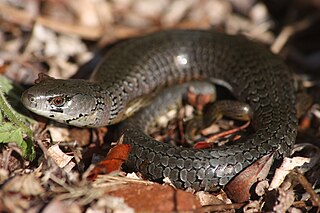 W
WThe she-oak skink is a large, long-tailed, snake-like skink endemic to Tasmania, Australia. It is viviparous; mating in spring, and giving birth in latest summer.
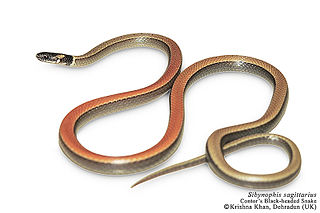 W
WSibynophis sagittarius, commonly known as Cantor's black-headed snake after Theodore Cantor, is a species of snake endemic to South Asia.
 W
WSphenomorphus dussumieri, commonly known as Dussumier's forest skink, is a species of skink, a lizard in the family Scincidae. The species is endemic to southern India.
 W
WStoreria occipitomaculata, commonly known as the redbelly snake, is a species of snake endemic to North America.
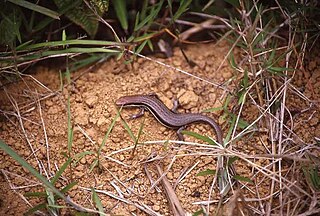 W
WTrachylepis gravenhorstii, also known commonly as Gravenhorst's mabuya, is a species of skink, a lizard in the family Scincidae. The species is endemic to Madagascar.
 W
WTrachylepis maculata, the spotted mabuya, is a species of skink in the genus Trachylepis recorded from Demerara in Guyana, northern South America. It is placed in the genus Trachylepis, which is otherwise mostly restricted to Africa, and its type locality may be in error. It is an unstriped, olive-brown, grayish animal, with dark spots all over the body. Its taxonomic history is complex due to confusion with Trachylepis atlantica from the Atlantic Ocean island of Fernando de Noronha and doubts regarding its type locality.
 W
WTrachylepis perrotetii, also known commonly as the African red-sided skink, the red-sided skink, and the Teita mabuya, is a species of lizard in the family Scincidae. The species is endemic to Africa.
 W
WTrimeresurus erythrurus, commonly known as the red-tailed bamboo pitviper, redtail bamboo pit viper, and redtail pit viper is a venomous pit viper species found in South Asia and Myanmar. No subspecies are currently recognized.
 W
WThe two-toed earless skink (Hemiergis quadrilineata) is a common species of skink found in coastal south-western Western Australia. It is characterised by its long tail, an absence of ear-holes, shiny skin, yellow underside and short weak limbs, each of which with only two toes. It can grow to be over 10 cm in length, however the average size is approximately 7.5 cm. It also exhibits a snake-like movement, and due to the small size and non-functionality of limbs in locomotion, it is often referred to as a legless lizard.
 W
WThe yellow-headed water monitor, also commonly known as the Philippine water monitor or Cuming's water monitor, is a large species of monitor lizard in the family Varanidae. Varanus cumingi was previously recognized as a subspecies of the water monitor, but today is acknowledged as a species in its own right. It feeds on birds, fish, mammals, and carrion. The species thrives in mangrove, forest and water margins in tropical refuges.